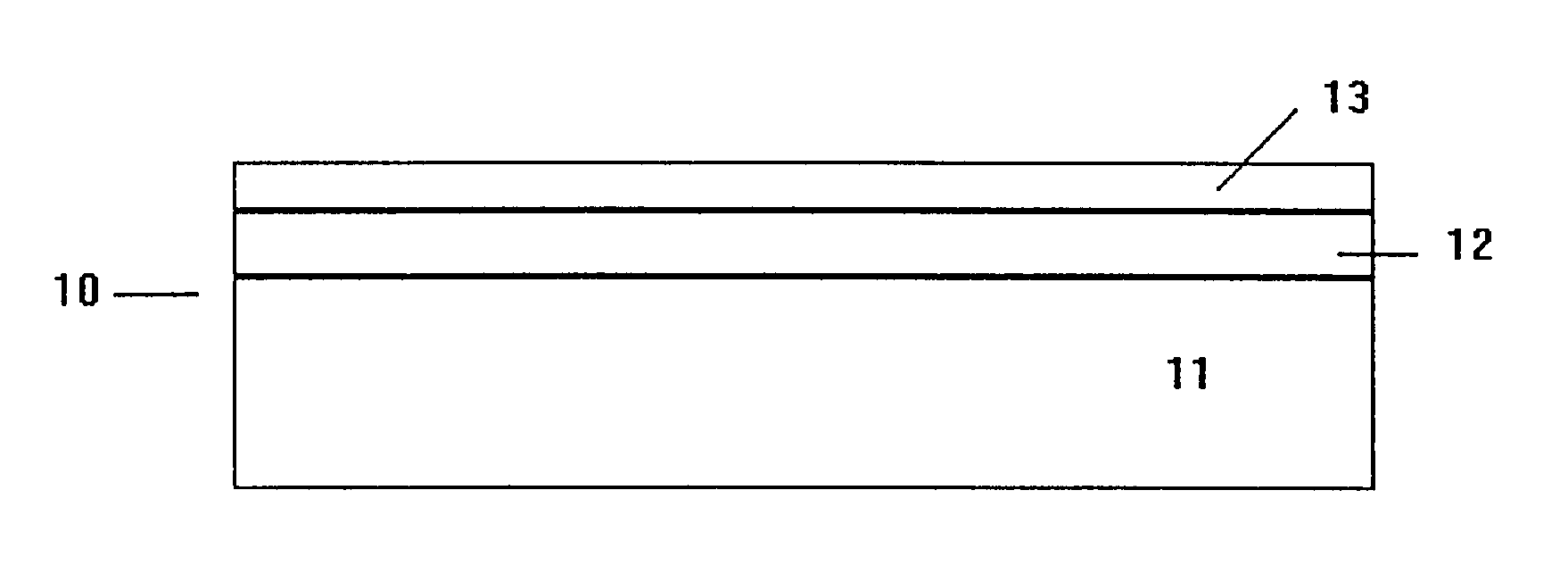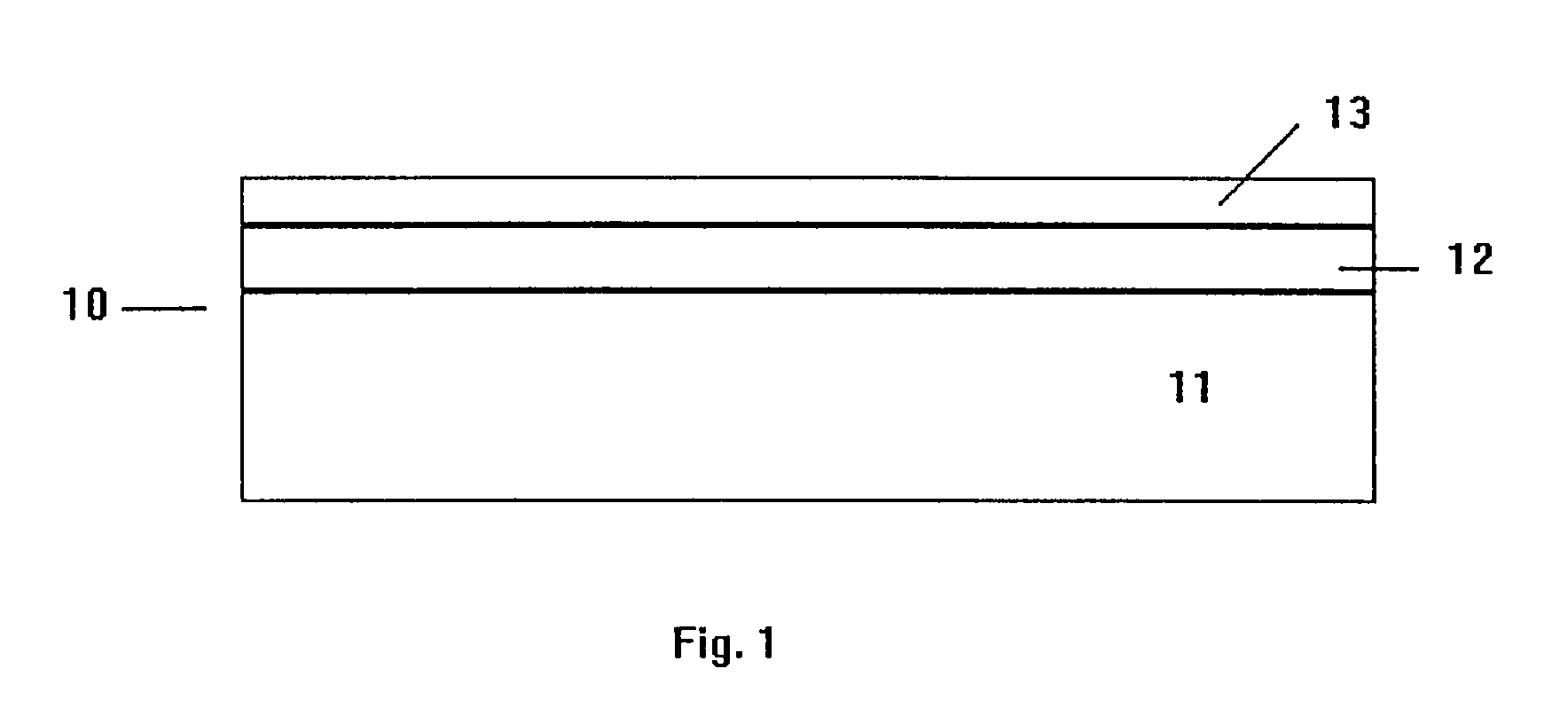Germanium doped n-type aluminum nitride epitaxial layers
a technology of aluminum nitride and nitride, which is applied in the direction of natural mineral layered products, polycrystalline material growth, crystal growth process, etc., can solve the problems of not being able to be used under any circumstances, obtaining blue light from semiconductors, and not being the only attractive produ
- Summary
- Abstract
- Description
- Claims
- Application Information
AI Technical Summary
Benefits of technology
Problems solved by technology
Method used
Image
Examples
Embodiment Construction
[0021]The invention is an n-type epitaxial layer of aluminum nitride conductively doped with germanium. Because the invention provides such an n-type epitaxial layer of aluminum nitride, it can be incorporated with a substrate to form a device precursor, and in conjunction with both a substrate and another epitaxial layer, can comprise a rectifying diode.
[0022]FIG. 1 illustrates such a rectifying diode broadly designated at 10 in which the substrate is designated at 11, the n-type aluminum nitride epitaxial layer according to the invention is indicated at 12, and a p-type layer of an appropriate semiconductor material is illustrated at 13.
[0023]A preferred material for the substrate 11 comprises silicon carbide which is most preferably selected from the 4H and 6H polytypes of silicon carbide because they currently offer the best crystal lattice match with aluminum nitride, and thus with the aluminum nitride layer 12. Presently, the 6H polytype of silicon carbide is more widely avail...
PUM
| Property | Measurement | Unit |
|---|---|---|
| Temperature | aaaaa | aaaaa |
| Electrical conductor | aaaaa | aaaaa |
| Carrier concentration | aaaaa | aaaaa |
Abstract
Description
Claims
Application Information
 Login to View More
Login to View More - R&D
- Intellectual Property
- Life Sciences
- Materials
- Tech Scout
- Unparalleled Data Quality
- Higher Quality Content
- 60% Fewer Hallucinations
Browse by: Latest US Patents, China's latest patents, Technical Efficacy Thesaurus, Application Domain, Technology Topic, Popular Technical Reports.
© 2025 PatSnap. All rights reserved.Legal|Privacy policy|Modern Slavery Act Transparency Statement|Sitemap|About US| Contact US: help@patsnap.com


